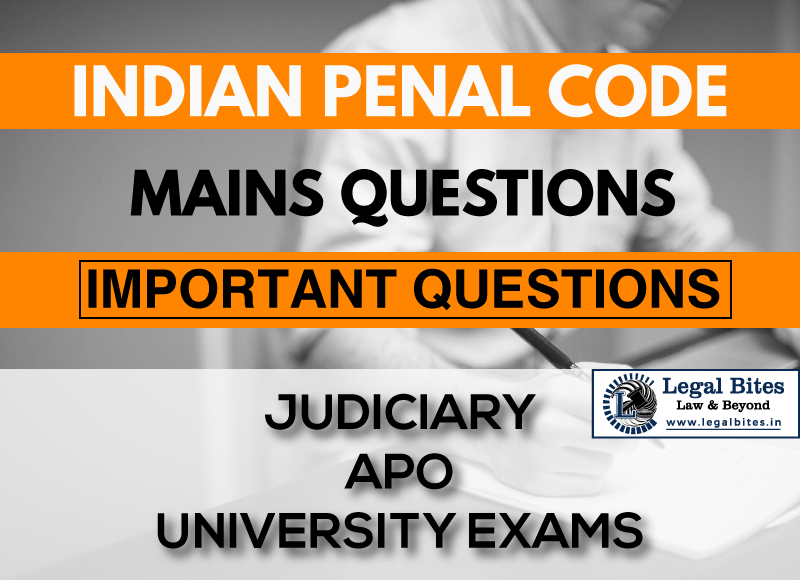Suddenly a fight began between A, B (accused persons), and C (informant). In such a sudden fight, A caused simple hurt to C whereas B caused grievous hurt to C. Will A and B both be guilty of causing grievous hurt to C in view of the provision ......?
Find the answer to the mains question of IPC only on Legal Bites.

Question: Suddenly a fight began between A, B (accused persons), and C (informant). In such a sudden fight, A caused simple hurt to C whereas B caused grievous hurt to C. Will A and B both be guilty of causing grievous hurt to C in view of the provision made in Section 34, I.P.C.? Give reasons and also refer to case law, if any, on the point. B successively and independently wound C with murderous intent. C dies from the loss of blood caused by both the wounds together. But the fact...
Question: Suddenly a fight began between A, B (accused persons), and C (informant). In such a sudden fight, A caused simple hurt to C whereas B caused grievous hurt to C. Will A and B both be guilty of causing grievous hurt to C in view of the provision made in Section 34, I.P.C.? Give reasons and also refer to case law, if any, on the point. B successively and independently wound C with murderous intent. C dies from the loss of blood caused by both the wounds together. But the fact remained that C would not have died from either wound alone. Discuss the criminal liability of A and B. [UPCJ, 1992, 1997]
Find the answer to the mains question of IPC only on Legal Bites. [Suddenly a fight began between A, B (accused persons) and C (informant)….]
Answer
Section 34 of the code deals with the provision relating to ‘acts done by several persons in furtherance of common intention’ which is known as common intention. This section reads as follows-
“when a criminal act is done by several persons in furtherance of the common intention of all, each of such persons is liable for that act in the same manner as if it were done by him alone."
Therefore, for the application of section 34, the meeting of minds (pre-arranged plan) between the accused person is necessary to hold the accused liable.
But in the present case, it is clear that A and B did not have a pre-arranged plan or prior meeting of minds or had acted in concert with a common intention to cause grievous hurt to C. So, both A and B here will be liable for their independent acts.
In R v. Gora Chand Gopi, (1860) BLR Sup Vo. 443, Justice Barnes Peacock had observed:
“When several persons are in company together engaged in one common purpose, lawful or unlawful, and one of them, without the knowledge and consent of the others, commits an offence, the others will not be involved in the guilt unless the act was in some manner in furtherance of the common intention.”
Referring to the given situational problem, Only B will be held liable for grievous hurt that resulted in C's demise and A will be liable only for simple hurt caused by him to C, in the context of section 34, IPC.
Important Mains Questions Series for Judiciary, APO & University Exams
- IPC Mains Questions Series Part I: Important Questions
- IPC Mains Questions Series Part II: Important Questions
- IPC Mains Questions Series Part III: Important Questions
- IPC Mains Questions Series Part IV: Important Questions
- IPC Mains Questions Series Part V: Important Questions
- IPC Mains Questions Series Part VI: Important Questions
- IPC Mains Questions Series Part VII: Important Questions
- IPC Mains Questions Series Part VIII: Important Questions
- IPC Mains Questions Series Part IX: Important Questions
- IPC Mains Questions Series Part X: Important Questions
Admin Legal Bites
Legal Bites Study Materials correspond to what is taught in law schools and what is tested in competitive exams. It pledges to offer a competitive advantage, prepare for tests, and save a lot of money.

